17 Massive Football Stadiums in England You Have to See to Believe
Stepping into a football stadium makes your heart race before the whistle even blows. England’s football grounds, in particular, are buzzing with energy and heart-thumping moments. If you’ve ever wanted to know where football comes alive, start with these grounds that must be seen to be believed.
Old Trafford – Manchester United – 74,310 capacity

Credit: Facebook
You don’t get nicknamed “The Theatre of Dreams” without turning a few heads. Old Trafford has been Manchester United’s home since 1910, and with over 74,000 seats, it’s the biggest club stadium in England. It’s hosted World Cup matches and FA Cup finals, and the roar here can rattle your bones. It even has its own train station.
Tottenham Hotspur Stadium – Tottenham Hotspur – 62,850 capacity

Credit: Reddit
Tottenham’s home ground is basically a spaceship with better snacks. This high-tech arena features a retractable pitch for NFL games and acoustics that make the place shake when fans get going. With over 62,000 seats, it’s the biggest club stadium in London—and might also be the loudest when things heat up in North London.
Wembley Stadium – England National Team – 90,000 capacity
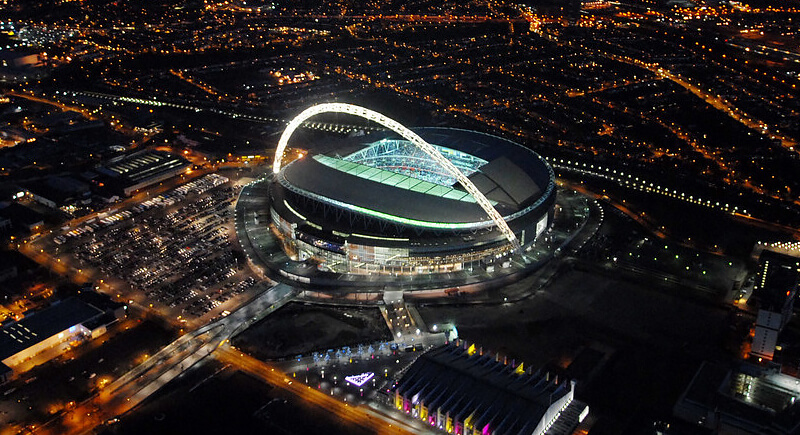
Credit: flickr
This one’s in a league of its own. Wembley isn’t home to a single club, but with 90,000 seats and that iconic arch, it’s the biggest stadium in the UK and the go-to spot for international matches and concerts. It’s where England fans dream big and where you’ll probably need binoculars if you’re sitting in row Z.
Emirates Stadium – Arsenal – 60,704 capacity
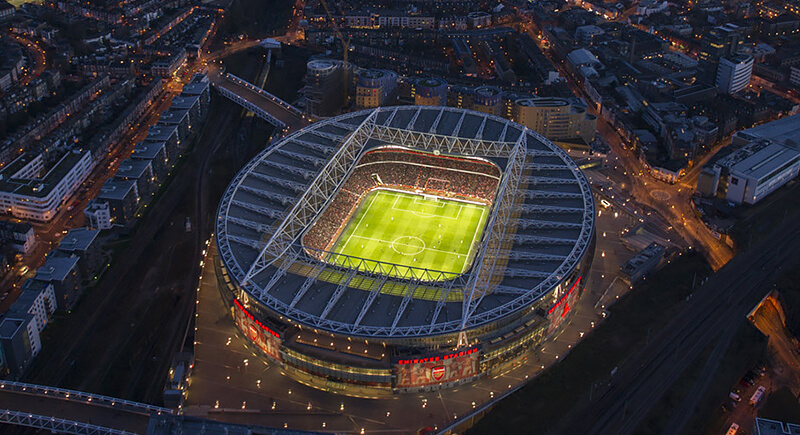
Credit: Reddit
Arsenal’s Emirates Stadium has serious curb appeal—smooth lines, sleek glass, and over 60,000 seats wrapped around a pitch that’s seen some beautiful football. Opened in 2006 to replace Highbury, it’s now one of the most modern stadiums in Europe. Don’t miss the statues outside—they’re practically a tribute to every club legend with a decent left foot.
Etihad Stadium – Manchester City – 53,400 capacity
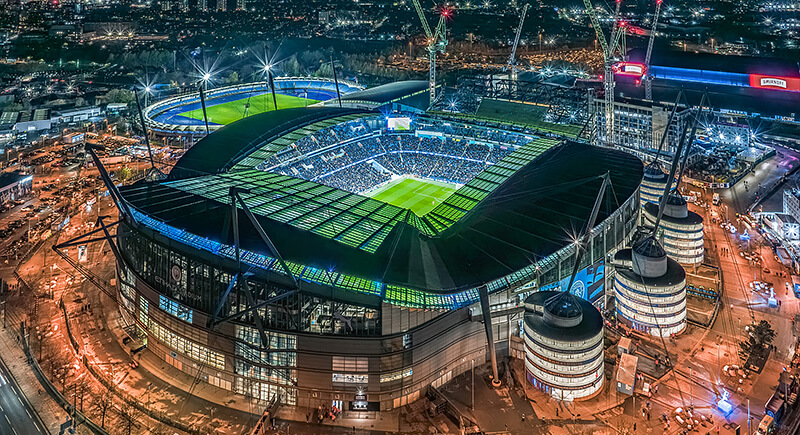
Credit: Facebook
What started as a venue for the 2002 Commonwealth Games turned into Manchester City’s fortress. These days, the Etihad hosts a trophy parade every other season and over 53,000 fans weekly. It’s built for quick, attacking football—kind of like the team itself. There’s even talk of expanding it again because, apparently, dominance needs elbow room.
Anfield – Liverpool – 61,276 capacity

Credit: Reddit
Home to Liverpool since 1892, Anfield grew to over 61,000 with its new Anfield Road Stand. But it still keeps that tight, electric feel. “You’ll Never Walk Alone,” sung by thousands of fans, still gives chills. The stadium tour includes a peek at those famous “This Is Anfield” signs and Klopp’s dugout seat.
London Stadium – West Ham United – 62,500 capacity
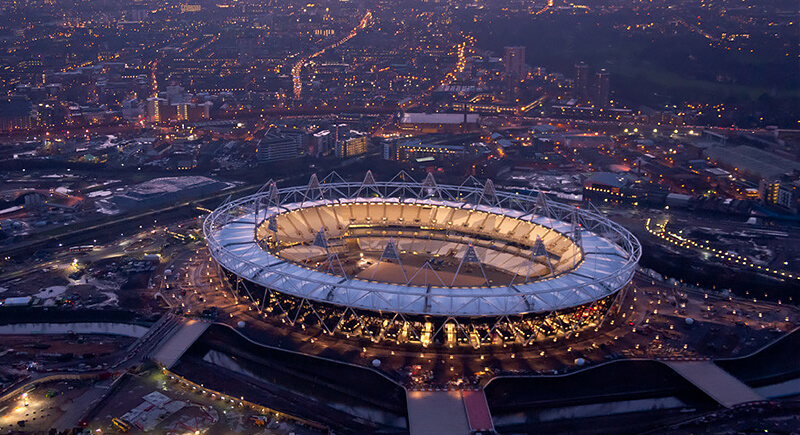
Credit: Reddit
The London Stadium was originally built for the 2012 Olympics but now belongs to West Ham United. It has a running track (sort of), sweeping views, and plenty of space to soak it all in. Also, the stadium lights up at night like a sci-fi set, especially when “Forever Blowing Bubbles” hits the speakers.
St. James’ Park – Newcastle United – 52,305 capacity
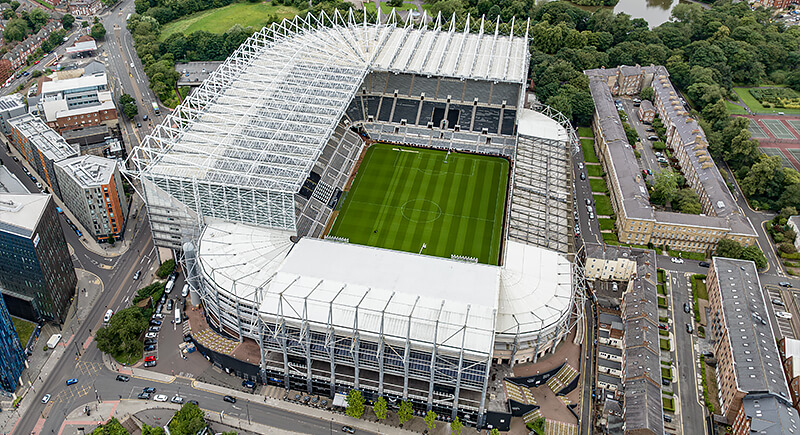
Credit: flickr
Right in the heart of Newcastle, St. James’ Park stands tall—literally. One side is stacked so high it might as well have its own climate. The stadium holds over 52,000 and has seen more legends, heartbreaks, and ups and downs than a soap opera. But ask any Geordie—there’s nowhere like it.
Villa Park – Aston Villa – 42,640 capacity
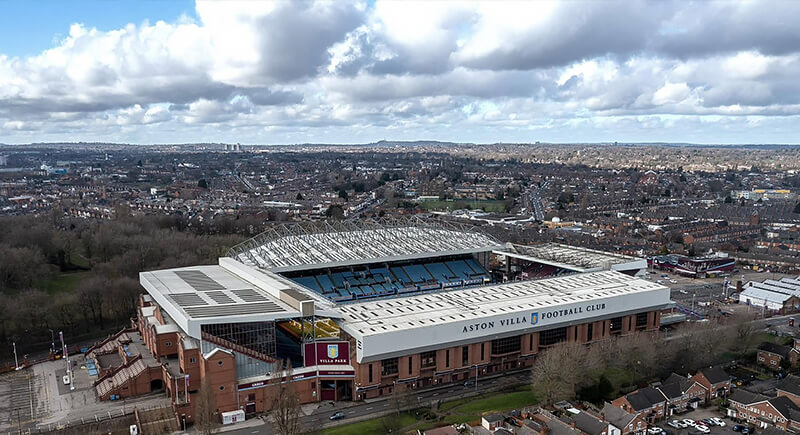
Credit: Facebook
There’s history baked into every corner of Villa Park. Opened in 1897, this Birmingham landmark has hosted more FA Cup semi-finals than any other stadium in the country. Aston Villa’s home ground seats over 42,000 and still delivers proper old-school football energy. The stadium has hosted England games, European nights, and even boxing matches.
Stamford Bridge – Chelsea – 40,341 capacity
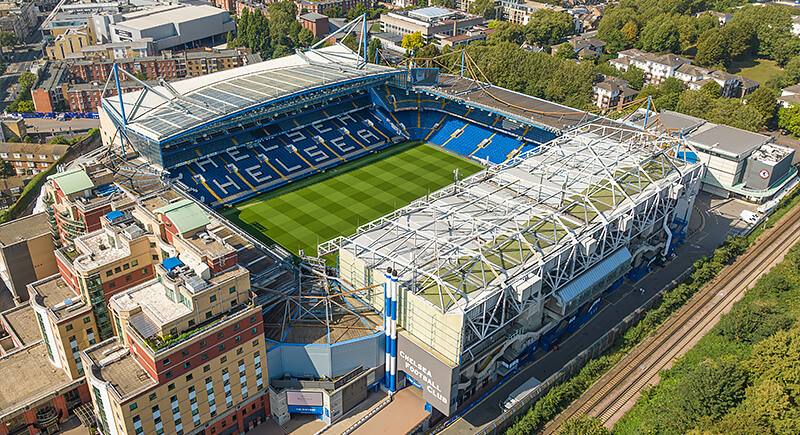
Credit: Wikipedia
Stamford Bridge has been Chelsea’s stomping ground since 1905, and though it’s one of the smaller stadiums on this list, it punches well above its weight. Tucked into a West London neighborhood, it’s a place where fans spill out of pubs and straight into Premier League drama.
Stadium of Light – Sunderland – 49,000 capacity
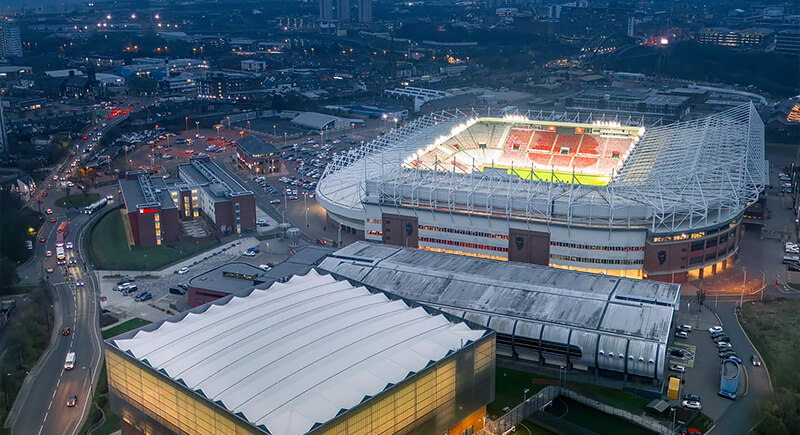
Credit: Facebook
With a name like “Stadium of Light,” you expect drama, and this place is just that. Opened in 1997, it’s one of the largest stadiums outside the Premier League, seating 49,000 fans with zero chill on match day. It replaced the historic Roker Park but kept the passion alive. Even during lower league seasons, the place stays loud.
Elland Road – Leeds United – 37,792 capacity
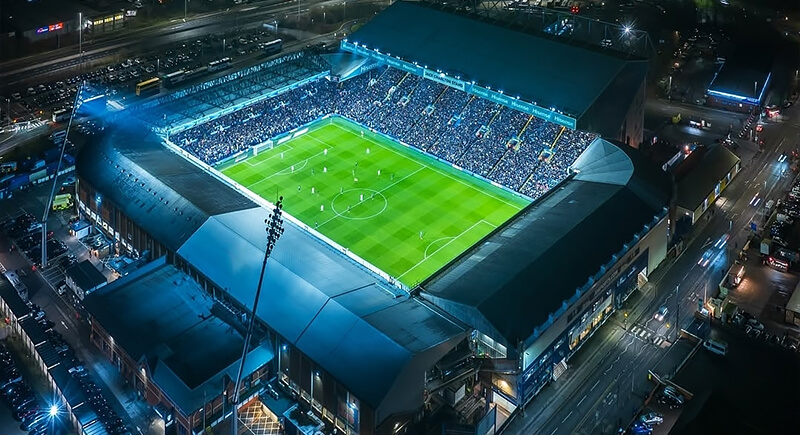
Credit: Facebook
The South Stand is where the noise starts, but the energy runs through every corner. It’s got that gritty, all-or-nothing vibe that makes Yorkshire football famous. Even the tunnel feels like it’s seen a few grudges. And while it’s not the newest place on this list, Elland Road delivers a raw match day that newer stadiums can’t replicate.
Goodison Park – Everton – 39,414 capacity
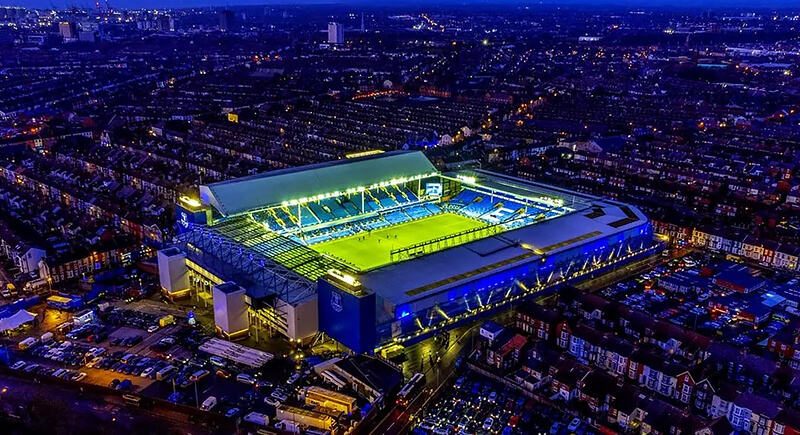
Credit: Reddit
Goodison Park is like your football-obsessed granddad—old, full of stories, and still full of fire. The tight seating and towering stands force the players right in your lap. Everton is moving soon to a brand-new waterfront home, so seeing a match here is ticking off an actual piece of football history.
Hillsborough – Sheffield Wednesday – 39,732 capacity
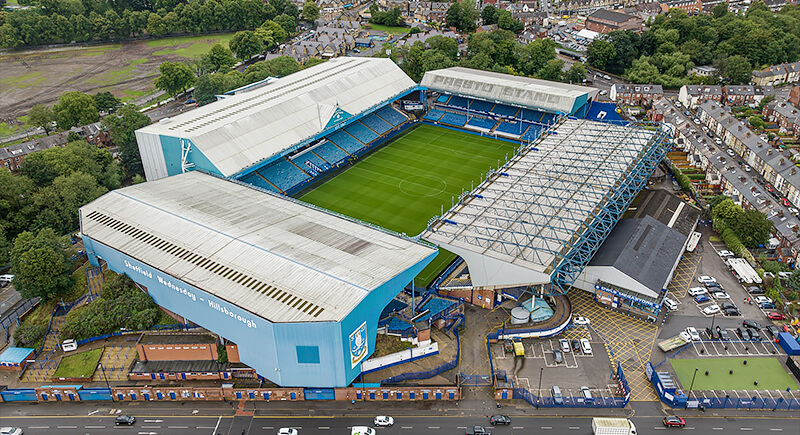
Credit: Facebook
Hillsborough has been Sheffield Wednesday’s home since 1899. It still features the classic English stadium layout—sloped roofs, loud corners, and steep stands. Yes, it’s known for serious history, but it’s also where thousands of fans belt out chants with Yorkshire grit. When Wednesday is on a roll, this place turns into a wall of sound.
Bramall Lane – Sheffield United – 32,050 capacity
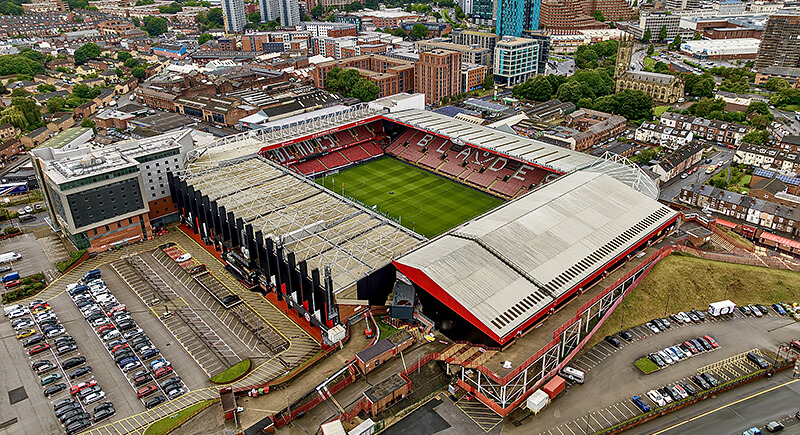
Credit: Wikipedia
Bramall Lane is one of the only stadiums in the world to have hosted football and cricket at the top level—and it’s been standing since 1855. Sheffield United has called it home since 1889, and its 32,000-seat setup keeps everything feeling close and charged.
King Power Stadium – Leicester City – 32,261 capacity
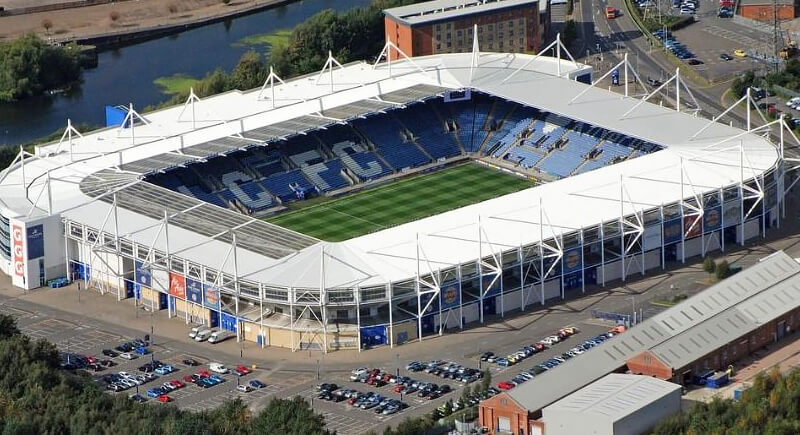
Credit: Facebook
King Power might be one of the newer stadiums on this list but don’t mistake modern for quiet. Opened in 2002, it holds 32,000 fans and became legendary after Leicester City’s underdog Premier League title in 2016. That wild season rewrote history and turned this place into a fortress.
Riverside Stadium – Middlesbrough – 34,000 capacity
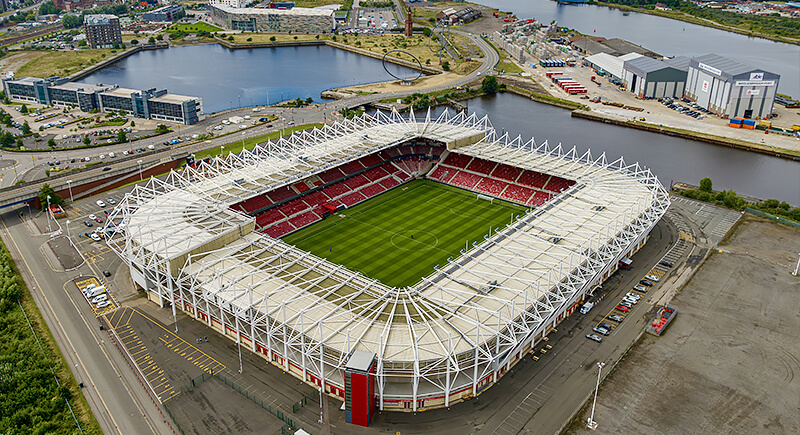
Credit: Wikipedia
The Riverside Stadium replaced the old Ayresome Park but kept that strong North East football identity. It sits right by the River Tees, so wind is practically guaranteed. Boro supporters bring serious passion, especially when promotion is on the line. It’s also hosted England matches, so it’s more than a local favorite.